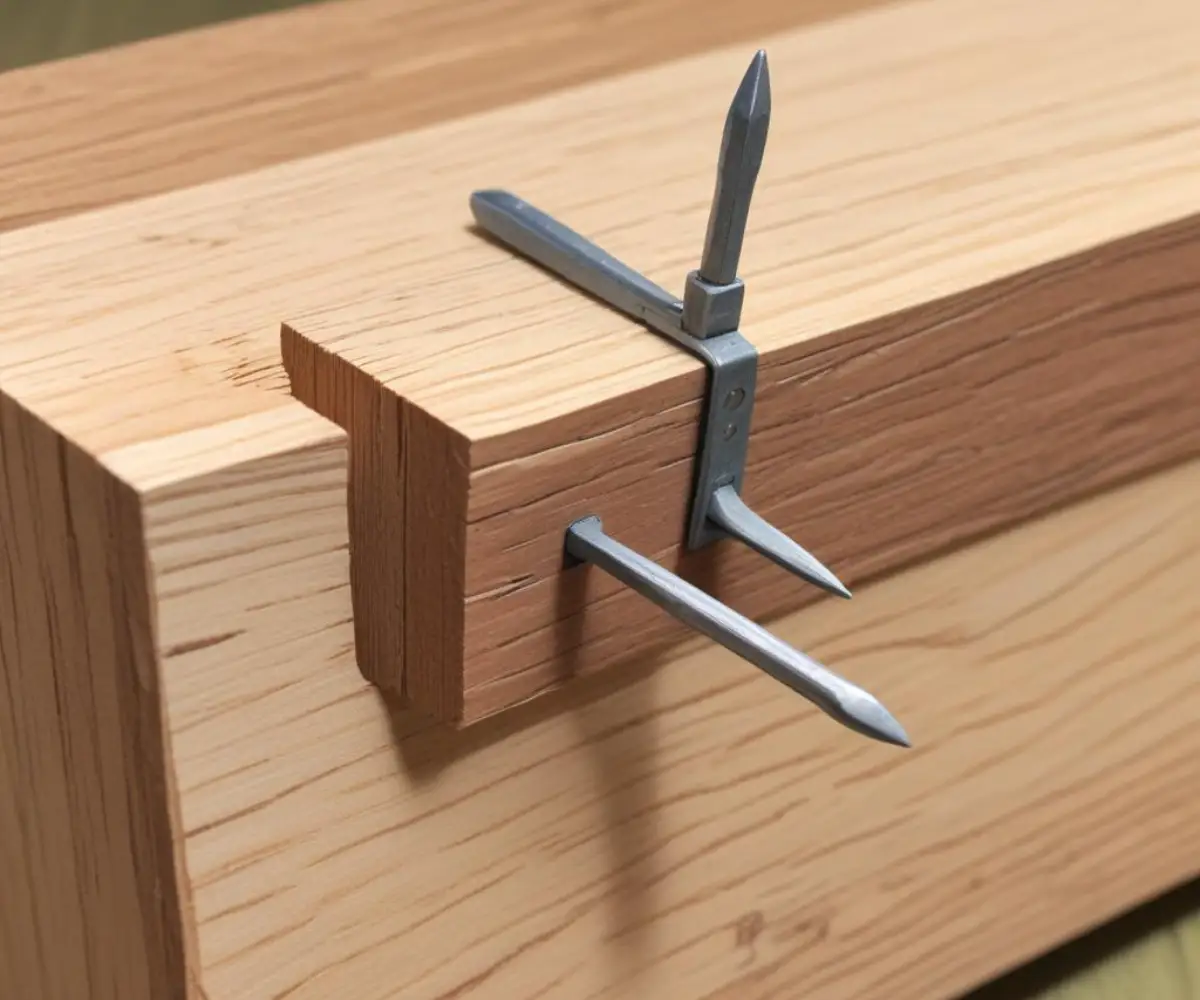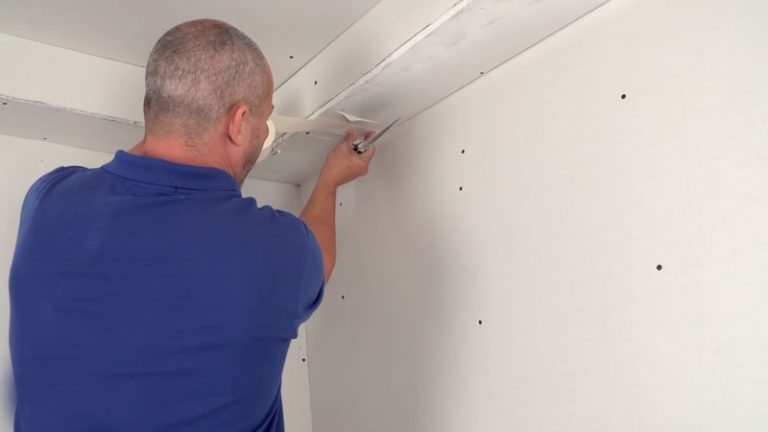How Much Weight Can a 3-Inch Nail REALLY Hold? The Answer Isn’t Simple
You have a heavy mirror, a large piece of art, or a new shelf. You also have a sturdy-looking 3-inch nail. The question that immediately comes to mind is a critical one: how much weight can a 3-inch nail hold? It’s a simple question that, unfortunately, has a very complicated answer.
Asking how much a 3-inch nail can hold is like asking how fast a car can go. The answer depends entirely on the car, the road conditions, and the driver. Similarly, a nail’s holding power depends on the nail itself, the material it’s driven into, and how it’s installed. Getting this wrong doesn’t just mean a broken frame; it could mean significant wall damage or even injury.
You'll Learn About
The Physics of Failure: Shear vs. Withdrawal Strength
Before we can talk about numbers, we have to understand the two primary forces a nail fights against. Every hanging project relies on one of these two types of strength. Understanding the difference is the most important step in hanging anything securely.
First, there is shear strength. This is the force that tries to snap or cut the nail in half, perpendicular to its length. Imagine hanging a heavy picture frame on a nail; the weight of the picture pulls straight down, creating a shearing force. For most household hanging tasks, this is the type of strength you are relying on.
Second, there is withdrawal strength, also known as pull-out resistance. This is the force required to pull the nail straight out of the material it’s driven into. This strength relies on the friction between the nail’s shank and the surrounding wood fibers. While less common for hanging decor, it’s critical in construction, like holding a roof sheathing down against wind.
It’s Not Just the Nail: The 4 Critical Factors of Holding Power
A 3-inch nail’s potential is only unlocked under the right conditions. The actual weight it can hold is drastically affected by a few key variables. Overlooking any one of these can lead to a catastrophic failure.
Factor 1: The Type of Nail You’re Using
Not all 3-inch nails are created equal. The design of the nail is one of the biggest factors in its strength. When you buy a box of “3-inch nails,” you’re likely getting one of a few common types.
Common Nails are the workhorses. They have a thick shank and a wide, flat head, designed for maximum strength in general construction. A 3-inch common nail is known as a 10d, or “ten-penny,” nail.
Box Nails look similar to common nails but have a thinner shank. This design is intended to reduce the chance of splitting thinner pieces of wood. The trade-off for this feature is a significant reduction in strength compared to a common nail of the same length.
Finishing Nails are much more slender and have a tiny head. They are designed for trim work where the nail head is meant to be hidden. A 3-inch finishing nail is much weaker than a common nail and should not be used for heavy loads. Many smaller nails, like the popular 16-gauge nail, are a form of finishing nail with very specific and limited weight capacities.
Factor 2: The Material You’re Nailing Into
This is arguably the most critical factor. A nail is only as strong as the material holding it. You can have the strongest nail in the world, but if it’s in a weak material, it will fail every time.
The absolute best-case scenario is driving the nail into a solid wood stud. Studs are the vertical wood beams that make up the frame of your walls. Nailing into a dense wood stud provides the nail with a secure anchor, allowing it to reach its maximum holding potential.
The worst-case scenario is driving a nail into drywall alone. Drywall is made of gypsum plaster pressed between two sheets of paper. It has very little structural integrity and will crumble under a load. A nail in drywall by itself can barely hold a few pounds and should never be trusted with anything valuable or heavy.
Older homes may have plaster and lath walls, which can be more robust than drywall but are also prone to cracking. For masonry like brick or concrete, you need specialized hardened steel nails and it’s often better to use a screw and anchor system.
Factor 3: The Angle of the Nail
How you drive the nail into the wall can dramatically increase its holding power. While it may seem intuitive to drive a nail straight in (at a 90-degree angle to the wall), this is not the strongest method for hanging.
By driving the nail at a downward angle, typically between 30 and 45 degrees, you significantly increase its shear strength. This technique, often called toenailing by carpenters, forces the load to work against both the nail’s metal strength and the compressive strength of the wood fibers it’s embedded in. An angled nail has to be both sheared off and pulled upwards against the wood grain to fail, making it much more secure.
Factor 4: The Type of Load (Static vs. Dynamic)
Finally, consider what you are hanging. A static load is a weight that is constant and doesn’t move, like a mirror or a painting. The force is predictable and unchanging.
A dynamic load is a weight that can move, vibrate, or have force applied to it. Think of a coat rack where coats are constantly being added and removed, or a hanging plant that might sway. Dynamic loads place much greater stress on the fastener, and the maximum safe weight for a dynamic load is much lower than for a static one.
The Numbers: So How Much Weight Can It REALLY Hold?
With all those disclaimers, we can finally talk about some estimates. The following numbers are for a 3-inch (10d) common nail under ideal conditions. These are estimates for static loads only and assume the nail is installed correctly.
When driven into a solid wood stud, a 3-inch common nail has two different capacities:
- Shear Strength: When angled properly (around 45 degrees) into a stud, a single 3-inch common nail can often support a static load of 40 to 60 pounds. Some tests show this can go even higher, but a conservative approach is always best for safety.
- Withdrawal Strength: The force required to pull a 3-inch common nail straight out of a piece of pine or fir is approximately 20-35 pounds per inch of penetration. With about 1.5 to 2 inches of penetration into a stud, the total withdrawal resistance is significant, but it’s still much weaker than its shear strength.
This is why the angle is so critical. A nail driven straight in relies on much weaker forces to hold its load compared to a nail driven at an angle.

Quick Comparison of 3-Inch Nail Types (Into Wood Stud)
To make the differences clearer, here is a breakdown of what you can generally expect from different types of 3-inch nails when driven correctly into a solid wood stud to hang a static load.
| Nail Type | Common Size | Typical Use | Estimated Safe Shear Load (Static) |
|---|---|---|---|
| Common Nail | 10d | Framing, General Construction | 40-60 lbs |
| Box Nail | 10d Box | Light Framing, Crates | 25-40 lbs |
| Finishing Nail | 10d Finish | Trim, Molding | 10-15 lbs |
A Practical Guide: How to Safely Hang Heavy Objects
Knowing the theory is one thing, but putting it into practice correctly is what ensures a safe outcome. Follow these steps to hang a heavy item using a 3-inch nail for the best results.
Step 1: Gather Your Tools
You will need a few basic tools: a good electronic stud finder, a reliable hammer, a tape measure, a pencil for marking, and, of course, your 3-inch common nails. Always wear safety glasses when hammering.
Step 2: Locate the Center of the Stud
This is the most important step. Use your stud finder to locate the edges of the wood stud behind the drywall. Mark both edges, and then measure to find the exact center. Driving your nail into the center of the stud provides the most wood for the nail to grip.
Step 3: Mark Your Spot and Drive the Nail
Once you’ve marked the center of the stud at the desired height, position your nail. Hold it firmly at a downward angle, somewhere between 30 and 45 degrees. Hammer it in confidently until about an inch or slightly less is left protruding to hang your item on. Be careful not to damage the wall with a mis-hit from the hammer.
Step 4: Test the Hold
Before you trust your valuable item to the nail, give it a firm tug downwards. It should feel completely solid and unmoving. If there is any give, wiggle, or movement, the nail is not secure. You may have missed the center of the stud or hit a soft spot in the wood.
When a 3-Inch Nail is the WRONG Choice
A nail is a fantastic tool, but it’s not the solution for every problem. Knowing when not to use a nail is just as important as knowing how to use one correctly.
Never use a nail for hanging items on drywall alone. For this, you must use a dedicated drywall anchor, such as a toggle bolt or a self-drilling anchor, which is designed to distribute the weight across the surface of the drywall.
For extremely heavy items like kitchen cabinets, large televisions, or anything approaching 100 pounds, you should graduate from nails to heavy-duty fasteners like lag bolts or lag screws, driven directly into the center of studs.
Finally, for any structural application—like building a deck, framing a wall, or even ensuring the integrity of a door frame—you must use the specific fasteners required by local building codes. These are engineered connections that a simple nail cannot replicate.
Even smaller fasteners have their place. For very light-duty tasks where a large nail would be overkill, other options are better. However, you might be surprised to learn about how much weight a brad nail can hold when used appropriately in cabinetry or trim work.
Conclusion: Trust the Stud, Not Just the Nail
So, how much weight can a 3-inch nail hold? As we’ve seen, there is no single answer. The holding power is a complex interplay between the nail’s design, the material it’s in, and the angle of installation. A 3-inch common nail can securely hold a significant amount of weight, but only when it is driven correctly into the center of a solid wood stud.
The nail itself is just one part of the system. The true strength comes from the stud it’s anchored to. Always locate the stud, choose the right type of nail for the job, and angle it downwards for maximum security. When in doubt, always choose a stronger fastening method. The small extra effort is well worth the peace of mind that your treasured belongings will remain safely on the wall.


